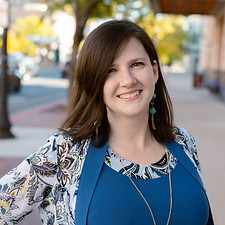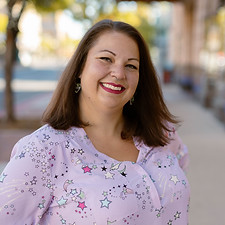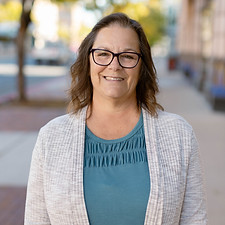
MISSION
Building community to end poverty through intentional friendships, personal transformation, and systemic change led by the people closest to the challenge.
VISION
All individuals live in equitable, thriving communities where poverty no longer exists.
“Circles is one of the best models for long-term poverty reduction I have ever encountered. It sets up a new dynamic that puts the families who want to become economically stable in the driver’s seat rather than being viewed as clients choosing predetermined options. All involved create a community conversation to reduce poverty regionally.”
— Lynette Fields (Executive Director of Poverty Solutions Group)
The Big View:
Leading Systemic Change from Within
The Big View represents the broad, transformative nature of Circles USA’s approach to ending poverty. While many initiatives focus solely on either serving individuals or advancing policy reform, we recognize that radical poverty alleviation (that is, “getting at root causes” of economic instability) requires both personal initiative and widespread systemic change. This strategy, combined with our commitment to centering the agency and leadership of those closest to the challenge—our Circle Leaders—drives the change process that our chapters and national network need for long-term poverty eradication.
Our Dual Approach to Ending Poverty
At Circles, we have two primary goals: to help families get out of poverty and to remove the barriers that keep people in poverty. The Big View is the wing of Circles that prioritizes our systems change work to remove those barriers. Research consistently shows that poverty alleviation efforts are most effective when led by those with lived experience of economic challenges. We are committed to supporting and resourcing Circle Leaders as they drive systemic change, advancing poverty eradication goals on the local, regional, and national levels.
What is the Big View Policy Platform?
Originally authored by board member Joan Kuriansky, our policy platform is built to address the challenges faced by low-income, working individuals and families who are earning just enough to disqualify them from many public benefits yet far too little to meet their basic needs. People experiencing poverty are also least likely to engage in the democratic process and most likely to be marginalized by systemic oppression.
-
Increasing Economic Stability
-
Smoothing Benefit Cliffs
-
Building Social Capital
-
Increasing Health, Wellness, and Family Supports
-
Supporting Education and Workforce Development
-
Elevating Equity and Democracy
These families are navigating a precarious financial landscape in an uncoordinated and non-responsive system that discounts their voice and value; however, their success is critical to breaking the cycle of poverty in our communities.
Our approach blends individual empowerment with community-driven strategies, uniquely positioning us to advocate for systemic changes that create sustainable pathways out of poverty.
Check out our Informational One-Pagers
What is the Cliff Effect?
As part of our Big View Policy Platform, Circles USA specially assists local chapters in identifying, bridging, and eliminating the Cliff Effect. This phenomenon (also known as a “benefits cliff”) happens when a raise or other income gain triggers the loss of benefits worth more than the wage increase. Our multi-pronged approach supports workers facing the Cliff and offers alternatives to employers and policy makers hoping to mitigate its effects.
How is Circles USA resolving
the Cliff Effect?
For seven years, Circles USA has been conducting research and developing tools to better inform families and policy makers about this barrier that too often keeps people trapped in poverty.
Circles USA recently produced a policy platform that provides local, national, and federal recommendations for mitigating the Cliff Effect.
In previous years, Circles USA prototyped a planning tool to estimate the income levels that prompt the loss of benefits. Additionally, several states commissioned our researchers to make recommendations. For Michigan, Circles USA produced a field scan of solutions nationwide. For New Mexico, our report included case studies that point to ways to resolve the Cliff Effect. Several Circles chapters also piloted an online calculator developed by Leap Fund. This tool helps recipients of public benefits understand whether they will hit a cliff, when it will happen, and how long it will take them to recover.
More recently, the Federal Reserve Bank of Atlanta’s Community and Economic Development department created the three tools to uncover the barriers to, and opportunities for, improved economic mobility. These tools make the data easily accessible for community planning and decision-making. Circles chapters piloted these resources to better support those who are facing the benefits cliff.
Resources for Understanding and Addressing the Cliff Effect
Federal Reserve Bank of Atlanta
Three tools to uncover the barriers to, and opportunities for, improved economic mobility
-
Snapshot—Assists in understanding the potential short-term financial impact of a new job or income change.
-
Dashboard—Assists in long-term career planning and flags potential financial barriers to career advancement.
-
Planner—Assists in detailed career planning while creating a customized budget that helps users navigate potential financial barriers to career advancement.
Know Your Community’s Wages and Cost of Living
National Trends
For more information or to get involved, contact us.


















.jpg)










































